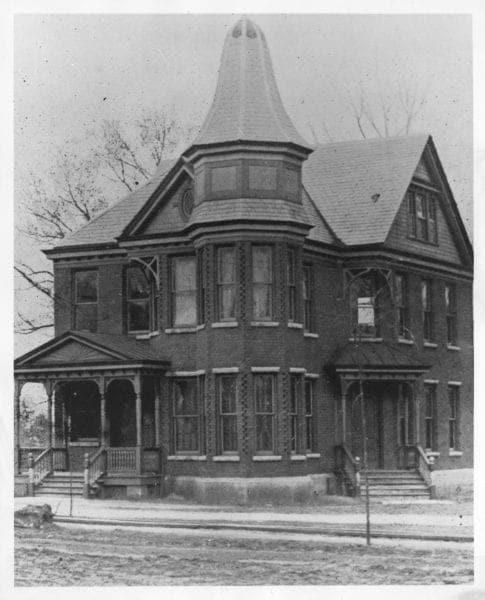DAVIDSON HISTORY
The North Carolina Medical College at Davidson

The North Carolina Medical College, circa 1900. (Photo courtesy of the Davidson College Archives)
It is a little-known fact that Davidson was home to one of the earliest medical schools in North Carolina. The school, called the Davidson School of Medicine, was founded as a one-year preparatory school in 1887 by Paul D. Barringer, whose mother was Robert Hall Morrison’s daughter, Eugenia. In 1889, Barringer accepted a job at the University of Virginia, and sold the school to Dr. John Peter Munroe, an 1882 graduate of Davidson College who had studied medicine at the University of Virginia. In 1890, Munroe increased the coursework at the school to two years.
In 1893, Dr. Munroe received a charter from the North Carolina General Assembly, and renamed the school to the North Carolina Medical College to reflect a new three-year curriculum. It joined two other medical schools that were operating in the state, the University of North Carolina Medical School (established in 1879) and the Leonard Medical School at Shaw University (established in 1880). The medical college had no formal relationship with Davidson College, although students took their chemistry and physics courses there, and some Davidson professors taught at the medical school on a contractual basis. While there is little information on where these early classes were housed, the Charlotte Observer reported in 1895 that a lecture room had been opened over McNeel’s store.
In 1896 a new three-story brick building was constructed on the corner of Lorimer and Concord roads. Dr. Munroe served as the college physician, and the small hospital in the school served as an infirmary for Davidson College students and staff. By 1897, enrollment at the medical college was 80, and 16 of the 17 graduates passed the state medical exam. In 1902, Munroe saw a need for more intensive clinical training, and opened a clinic in the Southern Real Estate Building in Charlotte. The following year, he moved the clinic to a building on Church Street that had been occupied briefly by Presbyterian Hospital. He also entered into a unique working arrangement with Good Samaritan Hospital, which served African American patients.
In 1905, the instructors in Davidson included Dr. Munroe (president; physiology and practice of medicine); William J. Martin Ph.D., M.D (general chemistry); J.M. Douglas Ph.D. (physics); E.Q. Houston M.D. (anatomy and obstetrics); G.M. Maxwell M.D. (materia medica, histology, bacteriology, pathology); W. H. Wooten, M.D. (hygine [sic]); and H.S. Monroe, M.D. (principles of surgery and demonstrator anatomy). I.W. Faison was the dean of the Charlotte location where Munroe worked in clinical medicine and nervous disorders and 15 other physicians taught courses in the various medical specialties. In 1907, the medical college left Davidson entirely when Munroe moved all of the school’s classes to Charlotte. The school closed when the students were moved to the Medical College of Virginia in 1914. There were 732 graduates during its 21-year history, and three hundred of these eventually became physicians. The original Davidson building, later the residence of physics professor James Douglas and his family, was demolished in 1970.
The following announcement for Dr. Paul Barringer’s medical preparatory school, the precursor to the North Carolina Medical College, appeared, in exactly this way, in the Raleigh State Chronicle, August 31, 1888:
PREPARATORY SCHOOL
FOR MEDICAL STUDENTS
Davidson College, N.C.,
LAYS THE FOUNDATION for a broad
and thorough Medical Education. Starts
at the bottom. The first in the South. Four
instructors. Full equipment. Dissecting
required. Terms reasonable and location
healthy. For Catalogue, address
PAUL B. BARRINGER, M.D.,
Principal
Nancy Griffith
Nancy Griffith lived in Davidson from 1979 until 1989. She is the author of numerous books and articles on Arkansas and South Carolina history. She is the author of "Ada Jenkins: The Heart of the Matter," a history of the Ada Jenkins school and center.


